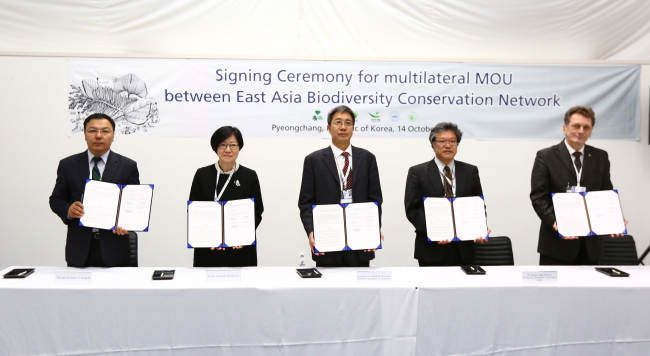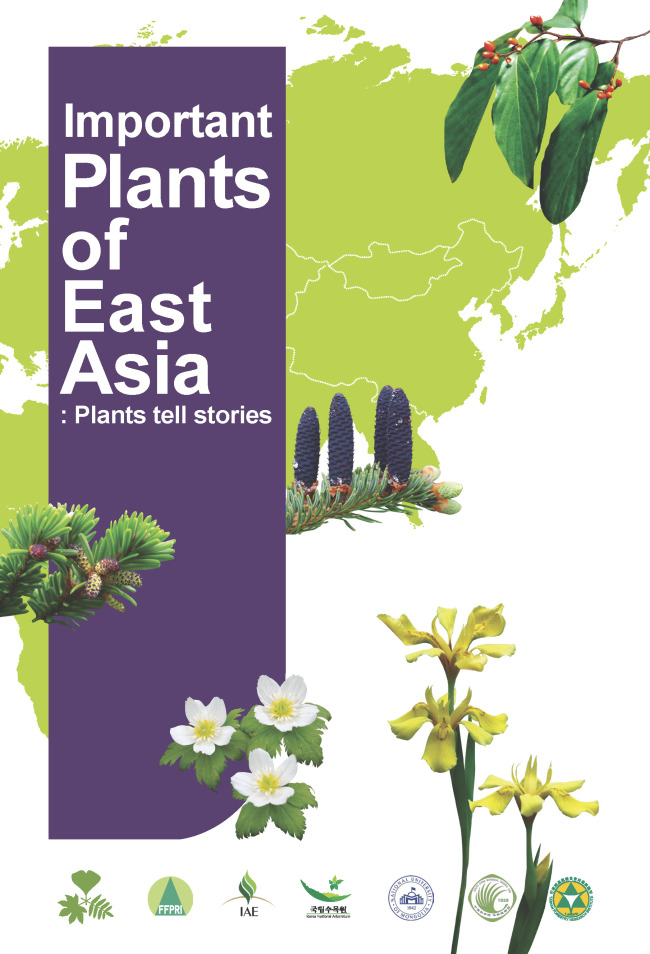Korea takes lead in enhancing region’s biodiversity
By Seo Jee-yeonPublished : Oct. 21, 2014 - 20:31
The Korea National Arboretum of the state-run Korea Forest Service appears to be taking a leadership role in plant studies in East Asia based on its commitment to enhancing the region’s biological diversity.
Among such efforts is the memorandum of understanding that KNA signed last week with its counterparts in the region to create the East Asia Biodiversity Convention Network.
The agreement was reached during the 12th meeting of the Conference of the Parties to the Convention on Biological Diversity, held in Pyeongchang, Gangwon Province, from Oct. 6-17.
“The regional network will be dedicated to finding solutions to climate change, exchanging vital and relevant technology between the network members, and studying biological diversity in the region,’’ the KNA said in a statement.
Among such efforts is the memorandum of understanding that KNA signed last week with its counterparts in the region to create the East Asia Biodiversity Convention Network.
The agreement was reached during the 12th meeting of the Conference of the Parties to the Convention on Biological Diversity, held in Pyeongchang, Gangwon Province, from Oct. 6-17.
“The regional network will be dedicated to finding solutions to climate change, exchanging vital and relevant technology between the network members, and studying biological diversity in the region,’’ the KNA said in a statement.

The six organizations joining the newly created biodiversity network include the KNA, National University of Mongolia, Institute of Applied Ecology of the Chinese Academy of Sciences, Forestry and Forest Products Research Institute of Japan, Botanical Garden-Institute of the Far Eastern Branch of the Russian Academy of Science, and South China Botanical Garden of the Chinese Academy of Sciences.
The KNA said it hopes to see the new entity possibly evolve into a pan-Asian organization that can contribute to the global initiative for conserving plants ― the Global Strategy for Plant Conservation 2020.
This initiative involves efforts for building a sustainable future in which human activities can support the diversity of plant life, including plants’ genetic diversity, the survival of plant species and communities and their associated habitats.
The biological diversity attained this way would in turn support and improve the lives of the human race, the KNA said.

The agency also unveiled an English book it has published on some 100 plants growing in East Asian countries. “Important Plants of East Asia: Plants Tell Stories” was introduced at a recent international symposium on the conservation of biological diversity. It is expected to help the public better understand the importance of preserving plant life.
At home, the KNA’s main role is to build a forest management system for the national Gwangneung Forest and to build an information network for plant resources in forests.
Gwangneung Forest, situated in Namyangju and Pocheon in Gyeonggi Province, is a royal forest surrounding the mausoleum of King Sejo of the Joseon era (1392-1897).
By Seo Jee-yeon (jyseo@heraldcorp.com)








![[Graphic News] More Koreans say they plan long-distance trips this year](http://res.heraldm.com/phpwas/restmb_idxmake.php?idx=644&simg=/content/image/2024/04/17/20240417050828_0.gif&u=)
![[KH Explains] Hyundai's full hybrid edge to pay off amid slow transition to pure EVs](http://res.heraldm.com/phpwas/restmb_idxmake.php?idx=644&simg=/content/image/2024/04/18/20240418050645_0.jpg&u=20240419100350)







![[KH Explains] Hyundai's full hybrid edge to pay off amid slow transition to pure EVs](http://res.heraldm.com/phpwas/restmb_idxmake.php?idx=652&simg=/content/image/2024/04/18/20240418050645_0.jpg&u=20240419100350)

![[Today’s K-pop] Illit drops debut single remix](http://res.heraldm.com/phpwas/restmb_idxmake.php?idx=642&simg=/content/image/2024/04/19/20240419050612_0.jpg&u=)